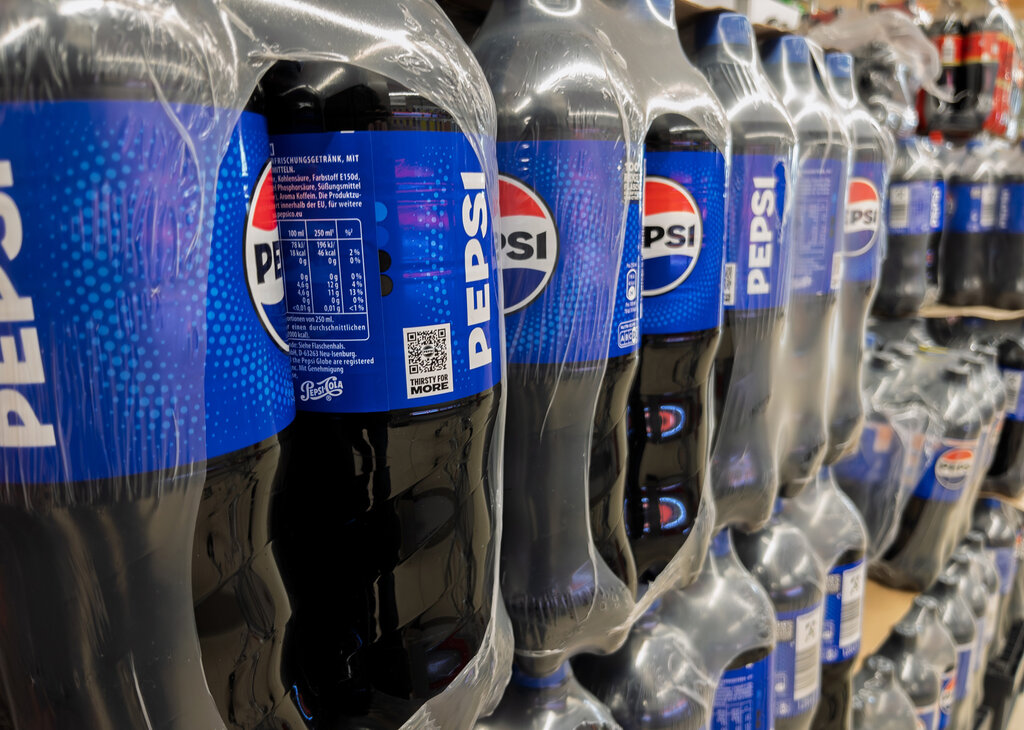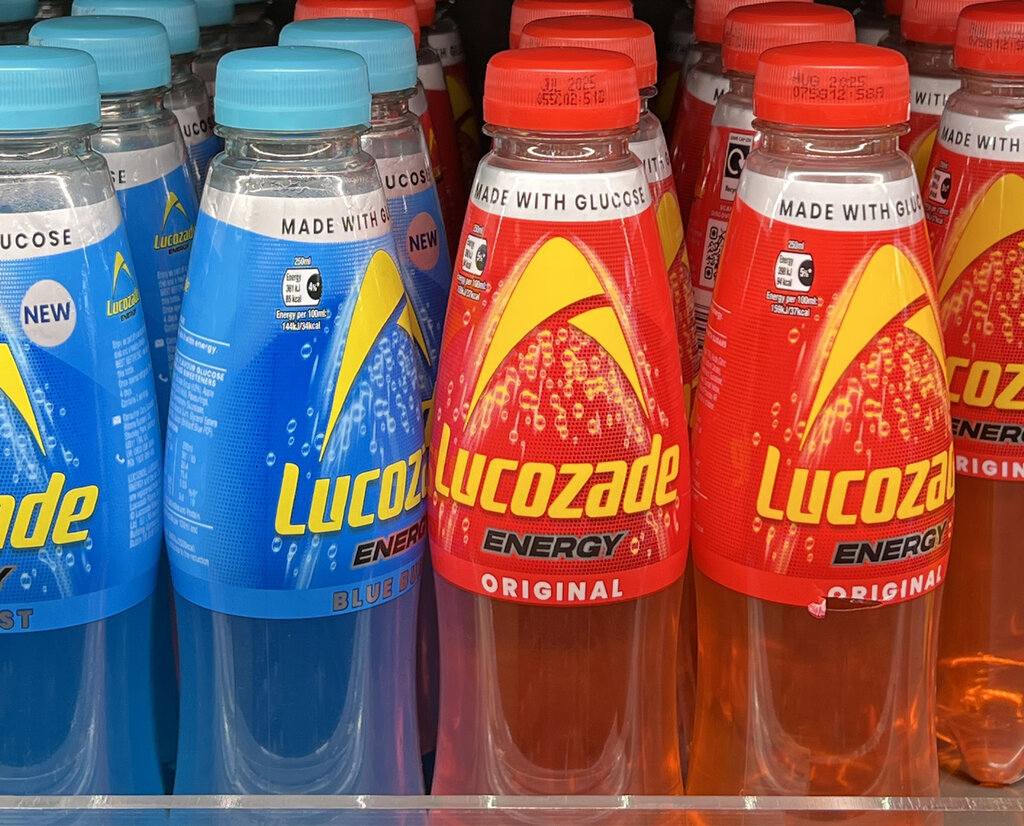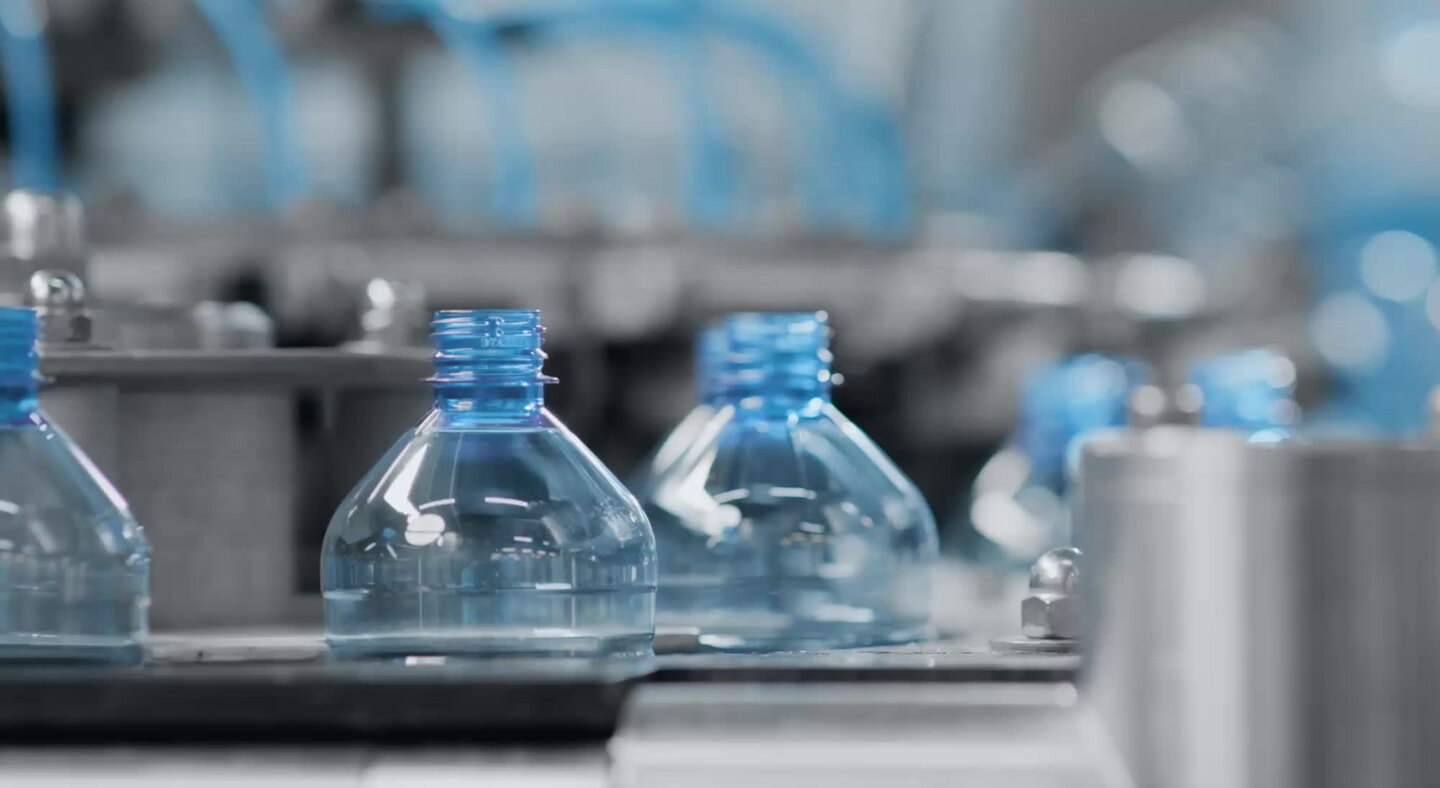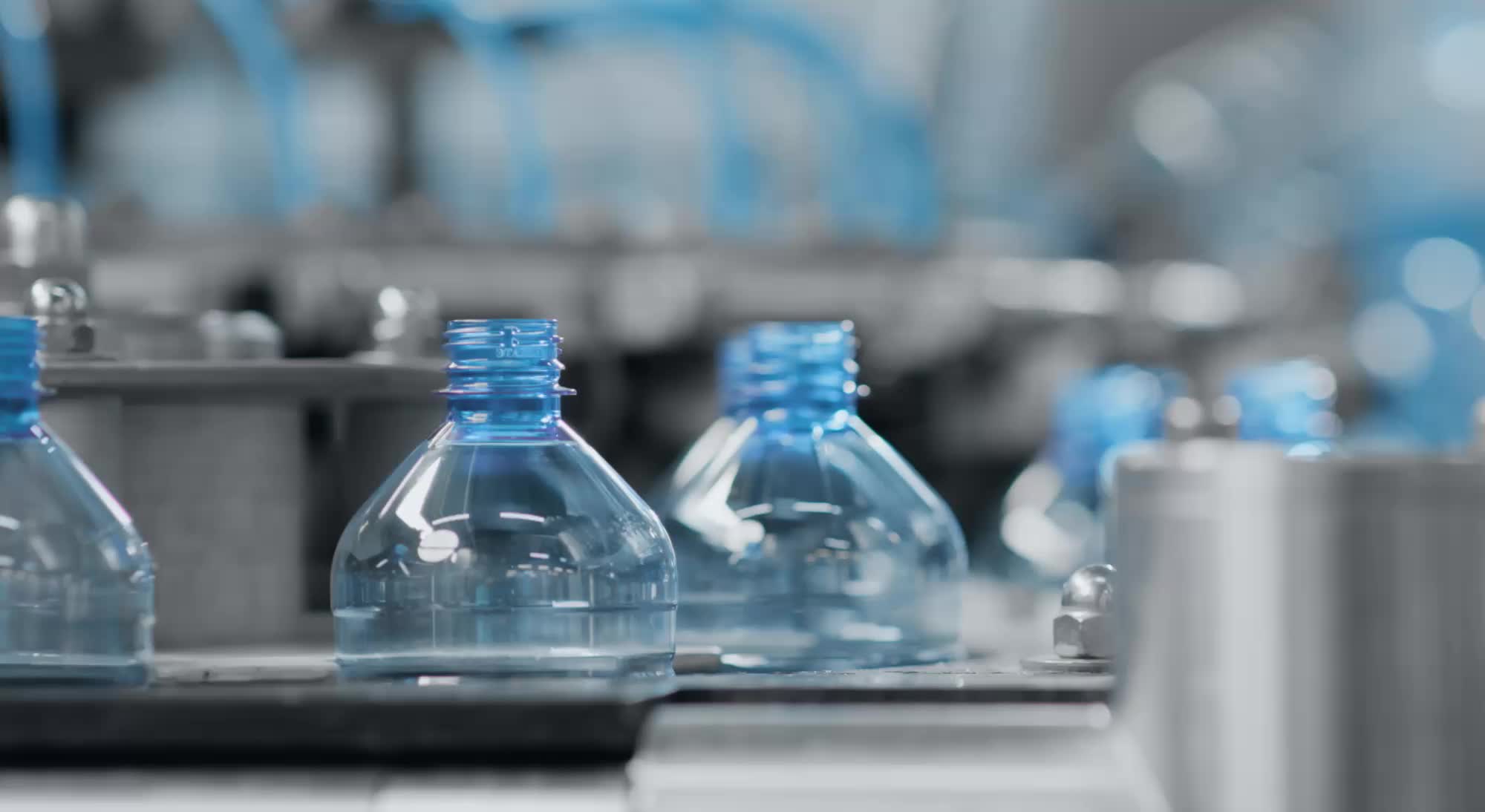Feature
Drinks battles Europe plastic-recycling “crisis”
Rising costs have hit Europe’s plastics recycling sector, eroding capacity, as drinks brands seek to meet pledges and face regulatory pressure. David Burrows reports.
Main video supplied by content aspect/Creatas Video via Getty Images
Drinks companies have led the way when it comes to replacing virgin plastic with recycled. According to trade association Unesda, its members, achieved an average of 51.7% recycled polyethylene terephthalate (rPET) last year, for example, way ahead of EU regulatory targets for member states and the FMCG market as whole.
“Reducing plastic is a key part of our global ambition to have 100% sustainable plastic packaging by 2030,” explains Fraser McIntosh, head of external affairs and sustainability at Suntory Beverage & Food’s business in Great Britain and Ireland. “This means using recycled plastic [...] or plastic that is not made using fossil fuels, all of which have a lower carbon footprint than virgin plastic.”
For drinks companies, single-use packaging accounts for a decent chunk of overall carbon emissions – often upwards of 40%. They rely heavily on plastic, not least because it is lightweight. But there is a problem with the recycling of plastics that is threatening to derail corporate commitments to use less virgin and more recycled material for their bottles. “The plastics recycling sector is struggling and shutting down factories,” explains Nicholas Hodac, director-general at Unesda. Its members have been facing eye-watering premiums on European rPET or looking further afield to imports, opening them up to dodgy materials, like virgin plastics labelled ‘recycled’.

Credit: VGV MEDIA/Shutterstock.com
Beverage companies under the Unesda umbrella have stuck to their plastic promises but they can’t continue to stomach the extra costs for much longer; especially while others happily switch back to cheap virgin plastic to cut costs and appeal to cash-strapped shoppers. “It cannot be that you have to pay a 40% or 50% premium for circularity,” Hodac says.
Some companies have already watered down – or in corporate parlance ‘evolved’ – their ambitions on packaging. PepsiCo has replaced a target of using 50% post-consumer recycled plastic by 2030 with a 40% by 2035 goal. Coca-Cola is now aiming for 35% recycled plastic by 2030 instead of the 50% outlined in its 2018 ‘World without waste’ initiative. NGOs are unhappy.
Wasted warnings
First things first: this is a crisis. Sites have already closed in the UK, Austria, Germany, France and the Netherlands. By the end of the year, Europe is likely to have lost one million tonnes of recycling capacity since 2023. Businesses are “suffocating”, warned 28 organisations representing the entire plastics recycling value chain in an open letter to EU policymakers in September.
It has not happened overnight. For three years, the plastics recycling sector has been struggling with rising costs – for labour and energy in particular and competition from cheaper imports. “People always ask why virgin plastic is cheaper than recycled and I point to the level of development in technology and the size and degree of automation in the plants,” explains James McLeary, managing director at Biffa Polymers. “Recycling is typically in small manual facilities with lines doing maybe 10,000 tonnes per year. Virgin plastics are produced in large, automated plants often closer to one million tonnes a year.”
This makes for an unfriendly market – one in which recyclers can be making money one day and losing it the next but continue to rely on more production of virgin plastic. “The failure here lies in not creating the market conditions that guarantee the long-term economic preference for recycled plastics,” says Michael Lenaghan, associate director at Anthesis, a UK-based consultancy.
Policies have been introduced in the EU, notably the Single Use Plastics Directive (SUPD) and the Packaging and Packaging Waste Directive (PPWR). Targets under the former are likely to be met, while those in the latter mandate the use of recycled content for a whole range of plastic packaging – including a 30% minimum for PET bottles by January 2030, rising to 65% by January 2040.
Some drinks companies have already met the lower level (and are on their way towards the upper one).
For the Ellen MacArthur Foundation charity, those who have backed the think tank’s global plastics commitment for the past five years and will continue to do so for the next five, are the “pioneers proving what’s possible” in better management of plastic packaging. They represent 20% of the market and the 80% performing on average “much worse” can often be forgotten. On recycled content specifically, the difference is stark: signatories spanning FMCG have tripled their share of recycled content, from 4.6% in 2018 to 11% in 2024. The global market figure has crept up one percentage point to 4.2%, according to figures released by EMF this week.
The worry is the leaders will be left to pull the laggards, which is why the EMF’s 2030 commitment is targeting collective advocacy to accelerate effective policies, ensnaring that-long tail of sustainable packaging shirkers. Voluntary action has delivered progress but it is too slow and is not near significant scale (especially for reuse). “Companies who lean in will be well positioned to co-shape the future, stay ahead of regulation and ensure continued market access, while those don’t risk being disrupted,” EMF executive lead for plastics and finance Rob Opsomer noted in his foreword for EMFs ‘2030 plastics agenda for business’ report, also published this week.
This is positive. However, it is the ‘right now’ that’s concerning recyclers: they are competing with cheap virgin plastic and losing sleep over business commitment to the cause. A company that reduces recycled content in the short-term risks only reputation rather than revenue or regulation. “We need to know that we can depend on support from the EU to be able to not only survive but also prepare for when the EU legislation is implemented,” says Oskar Karlsson, president for the recycling division at packaging supplier Trioworld.
Hard of hearing
The European Commission had been deaf to the repeated cries of ‘crisis’ from the recycling sector and those like drinks manufacturers who rely on it. Last week, the noise finally filtered through. “[...] Europe’s recycling sector is under increasing pressure, from high energy costs and volatile markets to growing competition from low-cost imports. In some areas, such as recycled plastics, growth has stalled and investment confidence is weakening,” explained environment commissioner Jessika Roswall following a roundtable she hosted with those from across the supply chain “to discuss how we can reinforce Europe’s recycling ecosystem and accelerate its transition to competitive circularity”. Agata Kotkowska, deputy head of the Commission’s bioeconomy and sustainable materials unit, noted on social media how she had “learned a lot” about this “complex subject”.

Jessika Roswall, European Commissioner for Environment, Water Resilience and a Competitive Circular Economy, at the “Closing the Loop: Addressing the Plastic Recycling Crisis in Europe” roundtable on 29 October 2025. Credit: EC - Audiovisual Service / Lukasz Kobus
Complex is one word for it. Chaotic and confounding are others. As David Drew, circularity specialist at consultancy PwC explains, “complex problems can have simple, easy-to-believe but wrong answers”. The most obvious explanation for the collapse in Europe’s recycling sector is companies backtracking on their recycled plastic commitments. Moves made by some will have added grease to the wheels as they began coming off – there are some reports of brands reducing their use of rPET to minimum contracted volumes – but are they really the root cause?
Europe’s recycling sector is under increasing pressure, from high energy costs and volatile markets to growing competition from low-cost imports.
EU commissioner Jessika Roswall
Experts consulted by Just Drinks do not sense that businesses are backpedalling – either from what they hear or see. As a self-confessed “packaging nerd”, who made plastic bottles and jars for 12 years and was also senior director for sustainability at Coca-Cola in Africa, Drew still checks the grocery shelves for tell-tale signs of recycled content. “And it’s still there,” he explains. “In particular, major beverage brands are still selling a significant portion of their portfolio in ‘100%’ recycled content bottles. And from the colour you can tell this is the case,” he adds.
Some brands are wavering, though – the gap between recycled and virgin plastic now too difficult to resist. In June, trade publication PETPlanet reported that, due to low oil prices, virgin PET (vPET) was available for around €1,000 ($1,153) per tonne, while rPET had reached up to €1,800 per tonne. “In Europe, many bottlers are reverting to the legally mandated minimum of 25% rPET content,” Jerry Herculeijns, CEO at PET specialist Hertex, told PETPlanet. “Even with a virgin plastics tax – such as the €450 per tonne levy in Spain – vPET is still more cost-effective than rPET as of June 2025.”
There is the bottle-half-full viewpoint, though: for those trying to hit 30% rPET, the other 70% of that bottle (made from vPET) just became much cheaper. And, if brands are still buying rPET at those premium prices, then they are perhaps less price sensitive than sceptics of their sustainability claims might have you believe.
Ask drinks brands how they have managed to weather the storm and stay on track and supply diversification often comes up. “Our mix of local and regional suppliers helps us navigate through challenges on availability so that we can continue to honour our sustainability commitments and increase our rPET usage year on year, despite the [...] closures of PET capacities in Europe,” says McIntosh at Suntory.

Credit: Dylanhatfield.com/Shutterstock.com
Global commitments by major FMCGs to increase their use of recycled plastic stimulated investment outside of Europe and the UK in meeting the expected new demand. PwC’s Drew saw first-hand in west and north Africa investors were installing operations based entirely on the expectation that they could sell material into European markets. Many of these investments are now operational and the material is keeping the market prices for rPET and hot washed flake in a range Europe (and the US) find “very difficult to compete against”, he explains – and that’s despite “much better product design regulations, collection systems and industry-funded support for collections and recycling (through EPR)”.
How the European Commission plans to help out isn’t clear. Those who attended the meetings said an announcement has been promised before Christmas and there appeared reluctance to risk letting the issue lie in the hope that next year’s Circular Economy Act would provide all the answers. As Marcian Lee, analyst at Lux Research, notes, “it sucks to be a European recycler right now” but that doesn’t translate to the rest of the world. “I think we need to promote domestic recycling,” he explains.
Stronger home or away?
Increasing reliance on imports has impacted domestic recyclers, who have called for “urgent trade and market defence mechanisms” from the European Commission. “Once you create the demand [for recycled content] you need to put the safeguards in place to encourage domestic recycling,” says Rafael Basciano, senior technical officer at FEAD, the European Waste Management Association. When it comes to imports, “we are not sure if some of it is [actually] recycled plastic”.
Imports were certainly a topic of debate – and some disagreement – at last week’s roundtable as recycling facilities continued to close or not even break ground. The situation is likely to get worse before it gets better, according to resources companies.
Once you create the demand [for recycled content], you need to put the safeguards in place to encourage domestic recycling.
Rafael Basciano, FEAD
What should drinks companies do? Look at the explanations beverage brands offer for watering down their plastic packaging targets and “lagging infrastructure” and a lack of “well-designed” EPR systems are right up there. Diageo last year revised its 2025 recycled plastic target down from 40% to 35% “due to supply constraints, technical barriers and legislation changes”, according to the company’s 2025 annual report, published in September. The latest figure for the Guinness owner is 43% recycled content across its plastic packaging.
In an interview last month with ESG specialist title Trellis, PepsiCo chief sustainability officer Jim Andrew said of the company’s changes to packaging and other environmental targets: “[...] there’s things that individual companies can do and there’s a range of aspirations and commitments to doing those things by different types of companies but there is also a tremendous amount that’s dependent on the systems that we’re all part of”.
This might sound like a handy get-out but this would be forgetting – again – the 80% of the market that has not made commitments to displace some of their virgin with recycled plastic packaging, let alone started using it at the rates some drinks companies are. Many continue to “free-ride” on the sustainability investments others are making, says Hodac at Unesda.
Riding out this storm will put FMCG firms in a better place as regulations – like mandated recycled content levels, increased taxes on virgin plastic and, of course, EPR – filter through. “If we are serious about stopping the growth of virgin plastic consumption in packaging, EPR and other regulations need to make it more expensive to use virgin rather than recycled,” says Lee at Lux Research. And that, he adds. needs to be “balanced with fixing recycled material supply availability”.
The latter is already focusing minds in the UK, as the first invoices for the UK packaging EPR scheme land at the doors of retailers and brands. The numbers companies are looking at are of real interest at board level. This is starting to happen across Europe too, as experts at Rabobank explained in a September report. With supply of high-quality recycled content remaining constrained, cost premiums will persist and regulations will increasingly scrutinise the traceability of imports, Regina Mestre, plastic packaging analyst for Europe and Africa, said. This means sourcing strategies, material choices, and customer commitments “may all need recalibration in the near-term”.
Cheers to reuse?
Whether this results in other companies seeing reason to pivot, or to plough on with their recycled plastic packaging plans, remains unclear. For drinks manufacturers reliant on PET then there are few other options than rPET that will keep them on the path to net-zero commitments. At least in single-use.
Green NGOs see another route to relying on recycled content. Reusable packaging could offer a safer, more resilient and less chaotic approach. Regulatory costs and carbon footprints would also be slashed in one swoop. Food for thought for those in the drinks industry.

